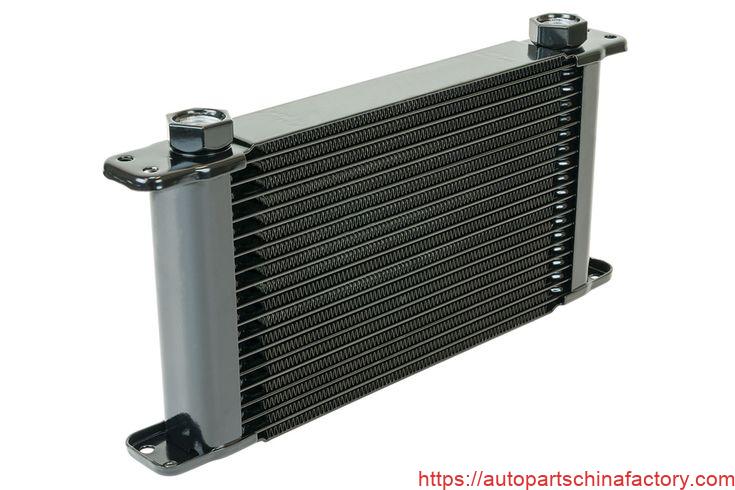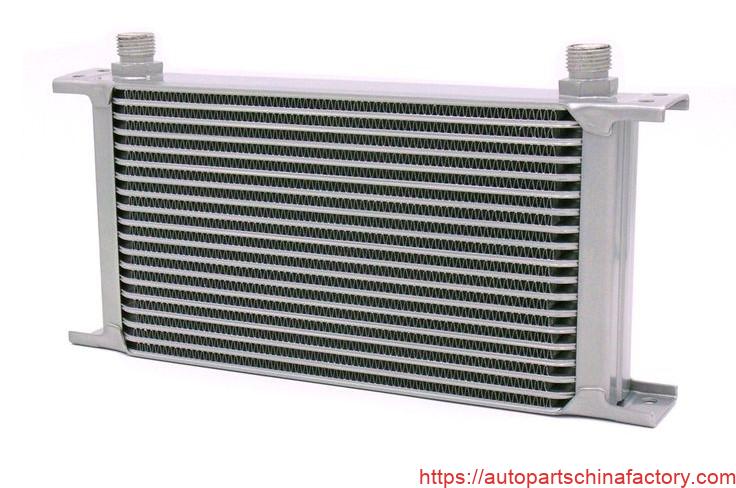- A+

While your car's primary cooling system focuses on engine coolant, 온도 조절이 필요한 또 다른 중요한 액체가 있습니다: 엔진 오일. 자동차 오일 쿨러가 들어간 곳입니다, 자주 볼 수 있지만 중요한 구성 요소, 특히 성능 차량 또는 무거운 부하가있는 차량에서. 자동차 오일 쿨러에 대해 알아야 할 모든 것을 탐구합시다..
자동차 오일 쿨러는 무엇입니까?? (Definition)
자동차 오일 쿨러는 본질적으로 엔진의 윤활유를 식기 위해 특별히 설계된 작은 라디에이터 또는 열교환 기입니다.. 냉각수처럼, engine oil absorbs a significant amount of heat as it circulates through the engine, lubricating moving parts and carrying away heat. If the oil gets too hot, it can break down, lose its lubricating properties, and lead to accelerated engine wear and potential damage. The oil cooler's job is to prevent this by dissipating excess heat from the oil.
Why is an Oil Cooler Important? (용법)
Keeping engine oil within its optimal temperature range offers several key benefits:
- Maintains Lubrication Properties: Oil that's too hot becomes thinner and loses its viscosity, reducing its ability to adequately lubricate engine components. A cooler ensures the oil maintains its protective film.
- Prevents Oil Breakdown: Excessive heat accelerates the oxidation and breakdown of engine oil, leading to sludge formation and a shorter lifespan for the oil itself.
- Extends Engine Life: By ensuring proper lubrication and preventing oil degradation, an oil cooler contributes significantly to the longevity and reliability of your engine.
- Enhanced Performance (Especially for Tuned/Hard-Driven Cars): High-performance engines, those that are turbocharged, supercharged, or frequently driven hard (e.g., track days, towing), generate more heat. An oil cooler is critical for maintaining oil stability under these demanding conditions.

What Does an Oil Cooler Look Like? (모습)
Automotive oil coolers typically come in a few common forms:
- Air-to-Oil Cooler: This is the most common type for aftermarket applications and often resembles a miniature radiator. It's usually a rectangular core with fins and tubes, similar to an intercooler or a small A/C condenser. It has two ports for oil lines to connect.
- Liquid-to-Oil Cooler (Heat Exchanger Type): Often found as OEM equipment, this type typically looks like a small canister or block with coolant passages running through it. Engine oil flows through one set of passages, and engine coolant flows through another, allowing heat to transfer from the hotter oil to the cooler coolant. These are often mounted directly to the engine block or near the oil filter housing.
설치: 위치와 복잡성
The installation of an oil cooler varies depending on its type and whether it's an OEM replacement or an aftermarket add-on:
- Air-to-Oil Cooler: These are usually mounted in a location that receives good airflow, such as behind the front bumper, similar to a front-mount intercooler. Installation involves mounting the cooler, routing braided lines from the engine (often via a sandwich plate adapter at the oil filter housing), and ensuring no leaks. This can range from a moderate DIY task to a professional installation, depending on the complexity of routing lines and mounting.
- Liquid-to-Oil Cooler: As these are often integrated into the engine's cooling system, replacing an OEM liquid-to-oil cooler might involve draining coolant and oil, and then disconnecting/reconnecting coolant and oil lines. This is usually a job for experienced DIYers or professional mechanics.
Proper connection of oil lines, ensuring no kinks or leaks, and adequate airflow for air-to-oil types are critical for effective operation.
재료 및 제조 위치
Most automotive oil coolers, especially air-to-oil types, are constructed from 알류미늄 due to its excellent heat dissipation properties and lightweight nature. The core will have aluminum fins and tubes, and the end tanks will also be aluminum, 캐스트 또는 제작. Liquid-to-oil coolers might also use aluminum or other metals suitable for heat exchange with coolant.
Manufacturing for automotive components, including oil coolers, is globally distributed. You'll find production facilities in:
- 중국: A major global manufacturing hub for a wide range of automotive parts, 애프터 마켓 및 OEM 구성 요소를 포함합니다.
- 멕시코: A significant manufacturing base, especially for parts supplied to the North American automotive market.
- 미국: Several specialized performance parts manufacturers and OEM suppliers operate facilities here.
- 독일: Known for precision engineering and high-quality automotive component production.
- 일본: A strong presence in both OEM and aftermarket automotive parts industries.
- 대한민국: A growing and advanced manufacturing hub for automotive components.
The specific origin of an oil cooler will depend on the brand (OEM 대. 애프터 마켓) and the manufacturer's global supply chain.
Price Range of an Automotive Oil Cooler
The cost of an automotive oil cooler varies based on its type, size, 상표, and whether it's an OEM replacement or an aftermarket kit:
- Aftermarket Air-to-Oil Cooler Kits: 이것들은 범위입니다 $100 for basic universal kits to $500+ USD for high-quality, vehicle-specific kits that include lines, fittings, and sandwich plates. Performance-oriented coolers for specific applications can go even higher.
- OEM Liquid-to-Oil Coolers: If you're replacing a factory-installed liquid-to-oil cooler, the part itself can cost anywhere from $50 to $300+ USD, 차량에 따라.
- 설치 노동: Professional installation costs will vary depending on the complexity of the job. For aftermarket air-to-oil kits, labor might range from $150 to $500+ USD. Replacing an OEM liquid-to-oil cooler might be less, but depends heavily on accessibility.
Signs You Might Need an Oil Cooler
While less common to fail than a heater core or intercooler, an oil cooler can develop issues. Look out for:
- Oil Leaks: Visible oil leaks around the cooler or its connections.
- Overheating Oil Temperature: If your car has an oil temperature gauge and it consistently reads high, especially under normal driving conditions.
- Contaminated Coolant (Liquid-to-Oil Cooler): If a liquid-to-oil cooler fails internally, oil can mix with coolant, leading to a "milkshake" appearance in your coolant reservoir.
- 엔진 과열 (Secondary Effect): While not its primary function, severely compromised oil cooling can contribute to overall engine temperature issues.
Conclusion
The automotive oil cooler is a silent guardian of your engine's health and longevity. By ensuring your engine oil stays within its optimal temperature range, it protects against premature wear, maintains lubrication efficiency, and allows your engine to perform reliably, especially under demanding conditions. Understanding its role is key to comprehensive vehicle maintenance and ensuring your car runs smoothly for years to come.



